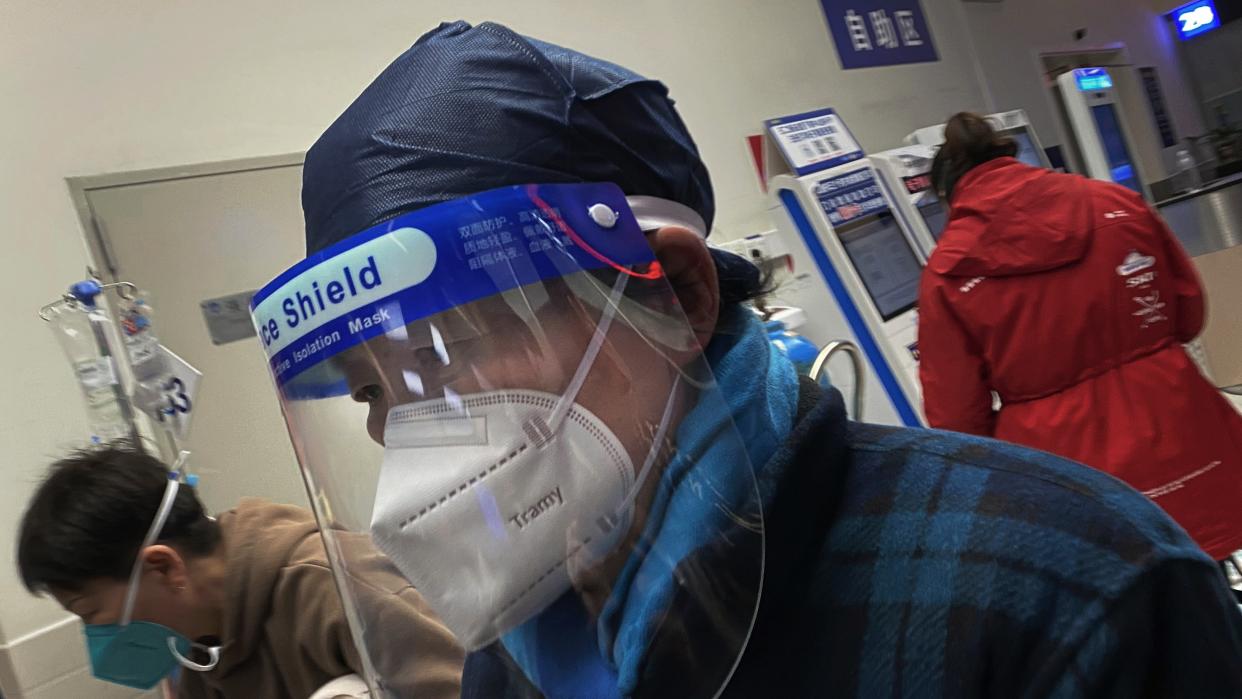China's pneumonia cases: should we be worried?

A surge in unexplained pneumonia cases among children in northern China is triggering fears of another pandemic.
The World Health Organization (WHO) last week made an "official request" to Beijing for more information about the increase in respiratory illnesses, after an alert was published by monitoring service ProMed, part of the International Society for Infectious Diseases.
The alert was titled "Undiagnosed pneumonia – China (Beijing, Liaoning)", wording that "echoed the first-ever notice" about what would become Covid-19, sent on 30 December 2019, said Reuters's global health correspondent Jennifer Rigby.
What are the reported symptoms?
Northern China has recorded a rise in flu-like illnesses since mid-October compared with the same period in the last three years, including clusters of undiagnosed pneumonia in children.
According to a media report that sparked the ProMed alert, children's hospitals in Beijing and Liaoning, 500 miles apart, have been "overwhelmed" with sick youngsters.
ProMed said that it was "not at all clear when the outbreak started" and that "it would be unusual for so many children to be affected so quickly".
A "Beijing citizen" reportedly told Taiwanese outlet FTV News that "fever" was the main symptom in the sick children. They "don't cough", said the man, named only as Mr Wei, but "many develop pulmonary nodules".
What are experts saying?
A pulmonary nodule is a "small lump in the lung, revealed by an X-ray or CT scan", explained New Scientist, and "are usually the result of ongoing or past infections", typically bacterial rather than viral.
Although bacterial infections "can be just as dangerous as viral ones", the site said, "when it comes to pandemic potential, they are regarded as less of a threat", because "bacteria replicate and evolve much more slowly" than viruses do.
All the same, the "news of another mystery outbreak has set alarm bells ringing", said Sky News, amid fears of another emerging pathogen that could spark a pandemic. But experts have "warned against jumping to conclusions".
Marion Koopmans, a Dutch virologist who advised the WHO on Covid-19, told Reuters that "we really need more information, particularly diagnostic information".
The Chinese authorities have attributed the rise in respiratory illness to the lifting of Covid testing and isolation rules last December.
The UK experienced an uptick in seasonal virus infections in 2022, as people mingled more after the spread of illnesses was suppressed by lockdowns and measures such as wearing masks.
And "this is China's first winter since its strict lockdowns", said New Scientist, "so there will be a much larger number of children than usual who haven't been exposed to certain viruses and bacteria before, and therefore have no immunity".
Conversely, the site continued, "if these cases in China were being caused by a new pathogen, lots of adults should be getting ill too, as they would also have no previous exposure".
The UK Health Security Agency (UKHSA) said last week that based on the data available so far, the recent increase in respiratory diseases in China was probably caused by pathogens such as flu, RSV, Covid-19 and mycoplasma pneumonia, a common bacterial infection that typically affects younger children.
The agency was "closely monitoring" the outbreak, said UKHSA chief executive Jenny Harries, adding: "We need to keep an open mind about the cause."
How likely is another pandemic?
"Given the number of pathogens evolving away", said New Scientist, there will "definitely" be another pandemic "eventually".
Public health expert Brian McCloskey, who advised the WHO on the pandemic, told Reuters that he was "not going to push the pandemic panic button on the basis of what we know so far" about the China outbreak.
"But I will be very keen to see the response to WHO from China and see the WHO’s assessment following that," McCloskey added.

